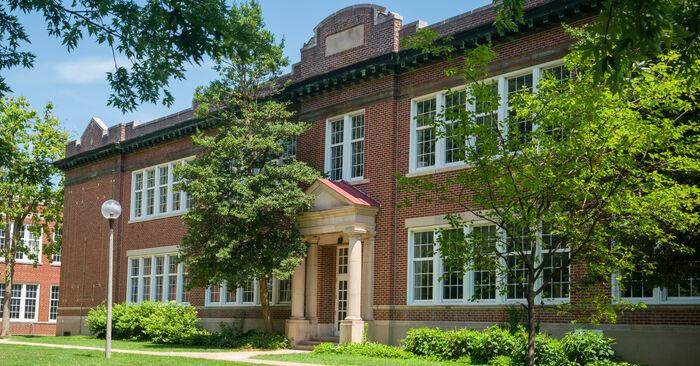Buildings on Campus Celebrate 100 Years

The Ophelia Parrish Building was originally constructed in 1923 with major expansions in 1939 and 2002. The building’s namesake was the first faculty appointment made by University president John R. Kirk when he named Parrish supervisor of the demonstration school. This was an elementary school operated on campus by the faculty as a practice school for its student teachers. In 1903, when the decision was made to consolidate all the departmental libraries into one central college library, the Board of Regents selected Parrish as the first full-time librarian and gave her the assignment of organizing the new facility. Parrish passed away in 1915, and when a new model school was built in 1923 it was named in her honor.
Today, the Ophelia Parrish Building is Truman’s cultural hub, serving as the home of the art, music and theatre programs. One of the oldest edifices on campus, it has served a few distinct roles for the University since its construction, and it continues to honor Parrish more than a century after her passing.
Kirk Building, one of the school’s most historic buildings, is named in tribute to John R. Kirk, the second-longest tenured president in University history. An alumnus of the University, Kirk became the school’s fifth president in 1899. Throughout the next 26 years, Kirk expanded programs and led the movement to change the school’s status from a normal school to a full-fledged teacher’s college.
Originally built in 1923, Kirk Building was renamed in his honor in 1959. For generations of alumni, it is remembered as the social center of campus since it was the site of games, assemblies and events.
With financial assistance from the state of Missouri, Kirk is being renovated to house a new Student Success Center. The center will employ a collaborative service model in which individual student service departments do not simply co-locate and deliver their services nearby to one another; but rather, work in coordination to meet students’ needs from entry to exit. The Student Success Center will be comprised of: the Career Center; Tutoring Services; the Student Health Center; Counseling Services; Student Access and Disability Services; the Center for Academic Excellence; the Communication Lab; and the Writing Center.

